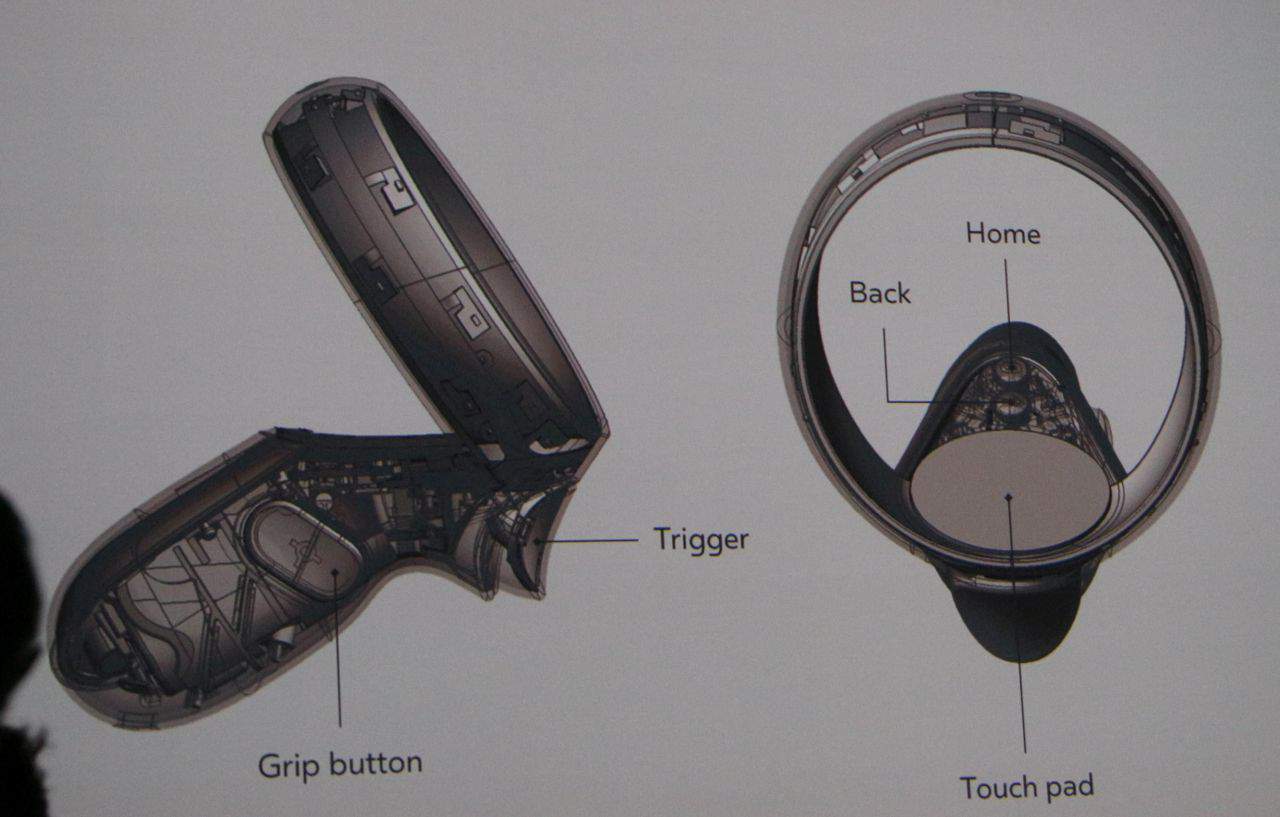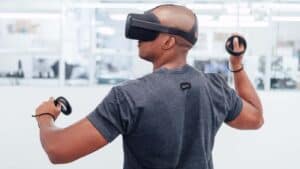Like many of you, we’ve been waiting for the Oculus Santa Cruz VR headset and it seems we’ll be waiting a little while longer. Originally thought to be out by this fall, UpLoadVR has heard from multiple sources that it won’t be released until Q1 of 2019. That shouldn’t be a surprise since it seems everything in Virtual Reality ends up delayed.
According to the report,
Oculus is targeting Q1 2019 to launch its upcoming higher-end standalone VR headset, currently known by the code-name Santa Cruz. Multiple independent sources have said that Oculus has shared a Q1 timeline for wide release.
The headset is designed to function on its own without the need for a PC, similar to Oculus Go, but with cameras added for inside-out tracking of 6DOF head movement and two Oculus Touch-style controllers. The last time we went hands-on with Santa Cruz was at the Oculus Connect 4 conference last year. The release window lines up with the two year anniversary of the original Rift’s launch at the end of Q1 2016, March 28th.
There’s a reason why everyone wants to get their hands on Santa Cruz. It’s not just another standalone VR headset like the Oculus Go, but one that promises to deliver fully immersive experiences like the Rift and Vive. It won’t match those two heavyweights in the specs as it’s not tethered to a computer. But it will have six-degrees-of-freedom (6DOF) tracking which gives you the realism we seek in the virtual.
And without being cabled to a computer, it should be easy to set up and use, making it ideal for VR labs in education and public use in museums and film festivals. And it opens new opportunities in enterprise settings with human resources and other areas able to deploy VR HMDs without all the computer hardware.
As an early version, Oculus Go has done well for itself, but in many ways, it remains a nothing more than a glorified 360° video viewer. There are less expensive ways of getting the same experience. Like with that phone you always have by your side.
The Oculus Santa Cruz VR headset is shooting for real – yet highly portable – virtual reality. Which is exactly what we want.
That little problem of porting over content
Okay, there’s not that much content, but there is a growing collection of VR experiences for Oculus Rift. And without the latter’s reliance on an external graphics card, this is turning out to be a challenge in developing Santa Cruz.
One of the major topics up for discussion is porting Rift content to the Santa Cruz headset — which is something we’ve heard from multiple sources is a big focus for Oculus’ launch lineup on the new headset.
The porting process sounds like it is easier said than done because Santa Cruz running on its own wouldn’t be as graphically powerful as a Rift plugged into a high-end gaming PC.
Inside Out Tracking and the Hand Controllers

The other challenge Oculus has focused on is the tracking of the hand controllers. This has always been an issue for standalone HMDs without external base stations. Microsoft’s so-called Mixed Reality VR headsets do a decent job of tracking their (very large) controllers, but they break the connection when your hands go too far to the side or behind your body.
It’s all very convenient until your hands end up in the wrong place.
Santa Cruz tries to solve this with four extra-wide sensors mounted on the headset to track the controllers and your hands even if they move behind your head. A short video from late 2017 gives you a sense of what to expect. We’ll be huge fans if they pull this off.
Here’s how the Oculus Santa Cruz VR headset could deliver
Here’s what we’d like to see – and what may not come to pass – with Santa Cruz:
- An inexpensive HMD. Probably not. Most see an estimated price of $600. That’s still better than buying a Rift and gaming computer. But we’d still like to see it break the under $500 barrier.
- Powerful enough to run ported versions of everything on Oculus Rift. More likely, but it won’t be good if users notice quality degradation.
- Long enough battery life to make you forget about it. The Oculus Go lasts 2.5 hours (at best) on a 3-hour charge. That’s barely passable. We’d like to see 3-4 hours but the weight would make it feel like a brick strapped to your face.
- A super long charging cable. Okay, so much for going standalone. Seriously, if you have a 3-hour charge time, at least provide a long enough cable so you use it sitting in a chair while charging. Try measuring the Oculus Go cable – it’s laughable.
- Ease of use. Oculus Go excels with an easy-to-pair controller and nicely designed interface. Santa Cruz shouldn’t disappoint here.
As Patrick Austin noted back in May in Oculus Go’s VR Is Good and Cheap, So Why Am I Still Disappointed? (we’re having title envy) the challenge here is to find the sweet spot between mobile VR with a high-end Smartphone or splurging for a full Oculus Rift rig. Go too cheap and you might as well use your phone and Gear VR or Daydream. Price it too high and people won’t see the value (despite the untethered experience). Freedom to roam can quickly lose its charm if your battery doesn’t last.
We’re hoping the Oculus Santa Cruz VR headset can deliver. But a successful standalone HMD is proving to be more challenging than many expected.
We should have more news at the Oculus conference in September and, hopefully, see a release in Q1 of 2019.
Emory Craig is a writer, speaker, and consultant specializing in virtual reality (VR) and artificial intelligence (AI) with a rich background in art, new media, and higher education. A sought-after speaker at international conferences, he shares his unique insights on innovation and collaborates with universities, nonprofits, businesses, and international organizations to develop transformative initiatives in XR, AI, and digital ethics. Passionate about harnessing the potential of cutting-edge technologies, he explores the ethical ramifications of blending the real with the virtual, sparking meaningful conversations about the future of human experience in an increasingly interconnected world.

